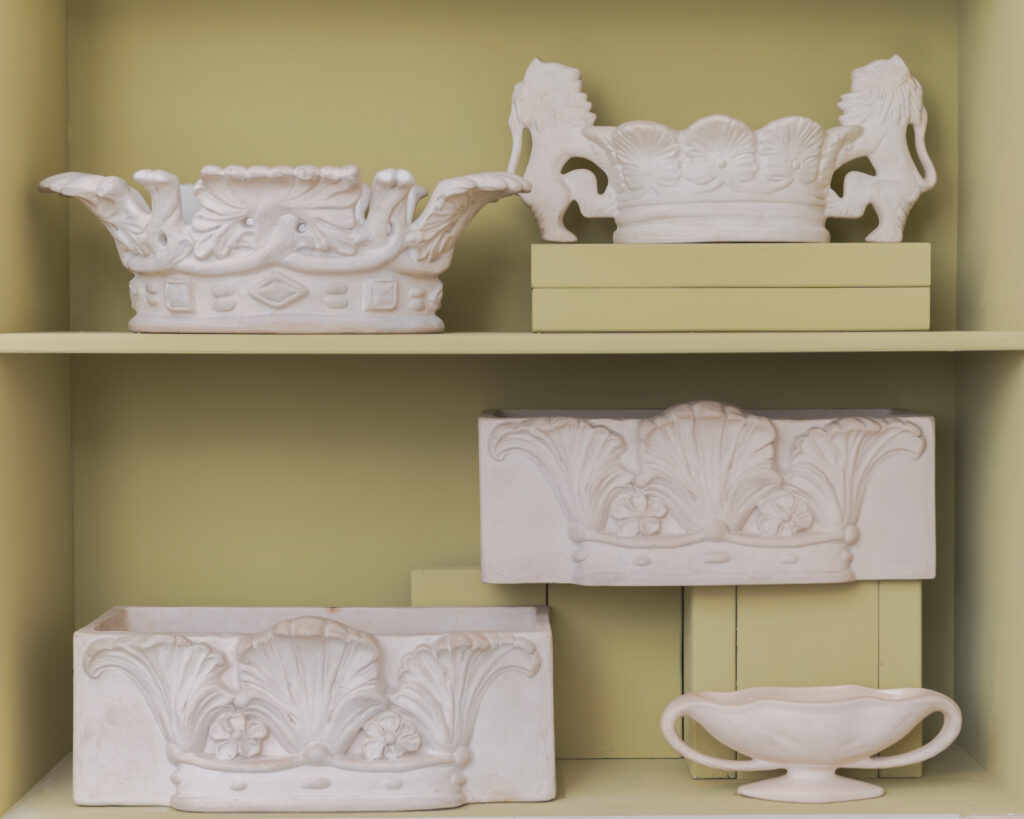Constance Spry’s Fulham Pottery Vases
Requiring vases that worked practically with the requirements for her floral arrangements Spry tasked her art assistant Florence Standfast to develop wide mouthed bowls to allow for an abundance of blooms and foliage. These initial designs were handmade in papier-mâché and coated in varnish or plaster.
By 1935 a more regular supply of vases was required, and Miss Standfast modelled a range of shapes that could be manufactured commercially. Fulham Pottery employed press-moulding techniques to make the range. The matt surface decoration demanded by Spry was replicated by making the vases in white, filter-pressed, Devon earthenware clay. This was biscuit-fired and then glazed on the interior only, leaving the desired plaster-like exterior finish. The vases were retailed by Flower Decorations Ltd, the Pottery only acting as manufacturer and thus the only identifying mark used was the stamped Constance Spry’s signature.
Florence Standfast’s elongated boat shaped vases were innovative and generous in scale. The unglazed exterior of the vases produced by Fulham Pottery offered great versatility to Constance Spry. They could be easily painted and adapted to compliment any colour scheme desired. Their sophisticated design and physical presence were greatly copied and imitated by other companies.
Standfast took inspiration from a wide variety of sources to develop new vases. Some of the most simple and original designs in the collection were inspired by Roman vessels. Whilst the striking datura flower (Brugmansia suaveolens) a favorite of Spry’s was immortalised in one of her most inventive shapes.
In 1936 Spry and her team collaborated with the stage designer and artist Oliver Messel to produce a crown and lion vase and a long deep planter for Edward VIII’s coronation. Rather than abandon the designs entirely they were used for the coronation of his brother George VI. The crown and lion vase was then later reproduced for the coronation of Queen Elizabeth II in 1953.
Fulham Pottery continued to produce vases for Spry’s company until the mid-1950s. They are now hugely sought after by collectors and design enthusiasts and are still popular with flower designers who find them perfectly adapted to the task they were originally produced for.



